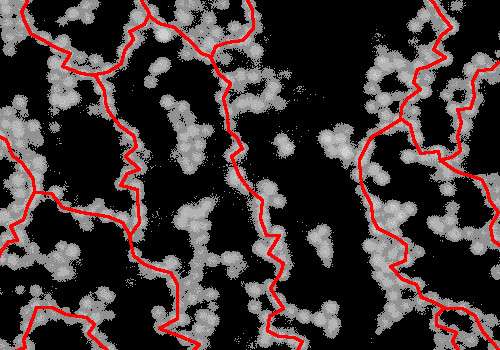New insights into how gels form

Gels are found in wide range of products that we use on a day-to-day basis. But what gives gels their solid properties? What stops the particles that they are made up of being able to move like they would in a liquid? A team from Friedrich-Alexander-Universität Erlangen-Nürnberg (FAU) and Heinrich Heine University Düsseldorf have now shown that this property of gels is due to directed chains of particles in their network-like structure.
Their findings have recently been published in the renowned journal Nature Communications.
In their study the researchers examined a model system consisting of a gel made of a mixture of colloids - particles that are only a thousandth of a millimetre in size - and even smaller macromolecules known as polymers. Before the liquid mixture becomes a gel, all of the particles can move freely. The colloids generally repel each other. However, if they get so close to one another than even the smallest polymers can no longer pass between them, they are forced even closer together. This causes colloid chains to form. If these chains form a complex network across the whole system, it results in a gel - at least that was what researchers previously thought.
However, the researchers from Erlangen and Düsseldorf have now discovered that the chains of particles must have a specific form in order to form a gel - they must be directed, which means that there must not be any loops in the system. Imagine it like this: if you move through a system along a directed chain you travel only in one direction, whereas in a system with loops you would also have to go back on yourself at some points. Directed chains give the system more stability than loops and are responsible for a gel's solid properties.
The results of the study are incredibly important for our understanding of the material properties of gels that are mixed into products such as toothpaste, gelatine, and many other cosmetics and foods to stabilise them. 'We also demonstrated that gels tend to contract as soon as there are chains of particles that stretch through the whole system,' says Prof. Dr. Michael Schmiedeberg from the Institute of Theoretical Physics. 'This knowledge could allow production processes for food to be improved even further.'
More information: M. Kohl et al, Directed percolation identified as equilibrium pre-transition towards non-equilibrium arrested gel states, Nature Communications (2016). DOI: 10.1038/NCOMMS11817
Journal information: Nature Communications
Provided by University of Erlangen-Nuremberg



















